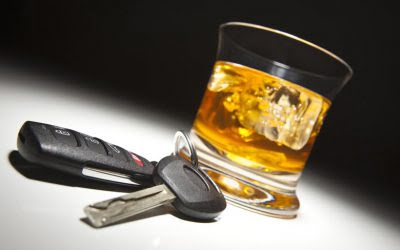What Are Relapse Triggers: Internal Vs External Relapse Triggers
Content
- What Are Relapse Triggers: Internal Vs External Relapse Triggers
- Common Addiction Triggers
- Definition of an Internal Trigger
- The ethical considerations of using internal triggers in design
- Old Places And Hangouts Can Trigger Relapse
- There are several ways to combat these triggers long before you ever experience them
- Understanding Internal and External Addiction Triggers
Initially, many addicts first use drugs and alcohol to avoid unwanted emotions. Sadness, anger, fear, anxiety, and feeling overwhelmed often engage the feeling of not being in control.
The recovery process doesn’t end after 90 days of treatment. The transition back to life outside of rehab is fraught with the potential for relapse. Aftercare resources such as 12-step groups, sober living homes and support for family and friends promote a life rich with rewarding relationships and meaning. Understanding the needs wants, and emotions of users are crucial in identifying internal triggers. By understanding what motivates a user, designers can identify potential internal triggers that will enhance the user experience.
What Are Relapse Triggers: Internal Vs External Relapse Triggers
Empty Pill Bottles– For those who were previously addicted to an opiate, relapse triggers may include pill bottles that are reminders of the bottles that opioids come in. Someone who finds that this is a trigger may benefit from placing their prescription medications in a weekly medication planner instead of taking them from traditional medicine bottles. Our brain stores memories by associating them with internal and external triggers other memories. Often a place may trigger a memory of an event, or smelling something, such as a particular cologne, may trigger your memory of a loved relative. The way that the brain links memories is a powerful tool that is used to help you recall important information, but that may also affect your recovery process. Both types of triggers present unique challenges that can derail a recovery process.
- Seeking help from a substance abuse treatment program that develops relapse prevention plans can help you cope with triggers.
- Internal triggers are a powerful tool in UX design that can greatly enhance the user experience.
- Walking or driving through places where they used to drink or consume drugs can spark a memory connected to drug or alcohol use.
- Rehab for Veterans Typically, after men and women’s honorable tours on duty, they can have a difficult time readjusting back to normal life…..
- Cognitive-behavioral therapy aims to address the mental health disorders which can accompany addiction.
- The more strategies you have available to you, the better off you will be in managing your triggers.
Granted these feelings are positive, they can easily trigger relapses. For example, https://ecosoberhouse.com/ most celebrations involve substance use among-st friends and family.
Common Addiction Triggers
Our representatives work solely for AAC and will discuss whether an AAC facility may be an option for you. Our helpline is offered at no cost to you and with no obligation to enter into treatment.
What is the difference between internal and external triggering events?
An internal event trigger is defined by one or more internal entity conditions that, when met, cause the trigger to be considered active. An external trigger is defined by an externally managed date occurrence.
Objects in an individual’s everyday life may induce a craving. Cues such as spoons can trigger memories of drug use in former heroin users without them being aware. The research maintained that subconscious cues are dangerous because they reinforce the patient’s desire to restart using drugs without them being aware of it. Researchers highlighted the importance of avoiding the people, places and things that remind patients of their former lifestyle. Combatting the ever-growing drug epidemic that this country faces begins with you. Make the most of our vast knowledge of addiction treatment and our proven ability to change lives.
Definition of an Internal Trigger
These strategies are formulated in drug rehab and can be practiced safely within a transitional housing situation. In this stage, you are battling yourself, constantly fighting an inner war between not using and using. You might begin bargaining with yourself, replacing one substance with another or you might begin to rationalize the use of drugs and alcohol by minimizing the consequences. You might also start permitting yourself to use a substance once or twice a year, thinking you’ll be able to control your usage habits. Although it’s important to note that occasional thoughts of using while in recovery are normal and even frequent, dwelling or acting on those thoughts is what will lead to relapse in the end. External triggers are certain activities, locations, people, objects, images, situations, and events that can make you want to use drugs or drink alcohol.
How to reduce stress, according to a change and transformation coach – image.ie
How to reduce stress, according to a change and transformation coach.
Posted: Mon, 30 Jan 2023 19:08:16 GMT [source]
For some, a trigger can elicit an emotional reaction, like thinking “I am being attacked.” For some, a trigger can cause harm or a relapse. Bricker then recommends getting curious about that sensation. For example, do your fingers twitch when you’re about to be distracted? Do you get a flurry of butterflies in your stomach when you think about work when you’re with your kids? What does it feel like when the feelings crest and then subside? Bricker encourages staying with the feeling before acting on the impulse.
The ethical considerations of using internal triggers in design
If we realize that we tend to reach for a substance when bored, we can identify other options for ourselves to manage boredom. Your ultimate goal should be to detach yourself from the trigger, recenter, and focus on your coping strategy. Verywell Mind uses only high-quality sources, including peer-reviewed studies, to support the facts within our articles. Read our editorial process to learn more about how we fact-check and keep our content accurate, reliable, and trustworthy. Verywell Mind’s content is for informational and educational purposes only. Our website is not intended to be a substitute for professional medical advice, diagnosis, or treatment.

Internal triggers are thoughts and emotions that can cause cravings to use. Internal triggers can be more difficult to manage than external triggers as you cannot physically separate yourself from your thoughts and emotions.

